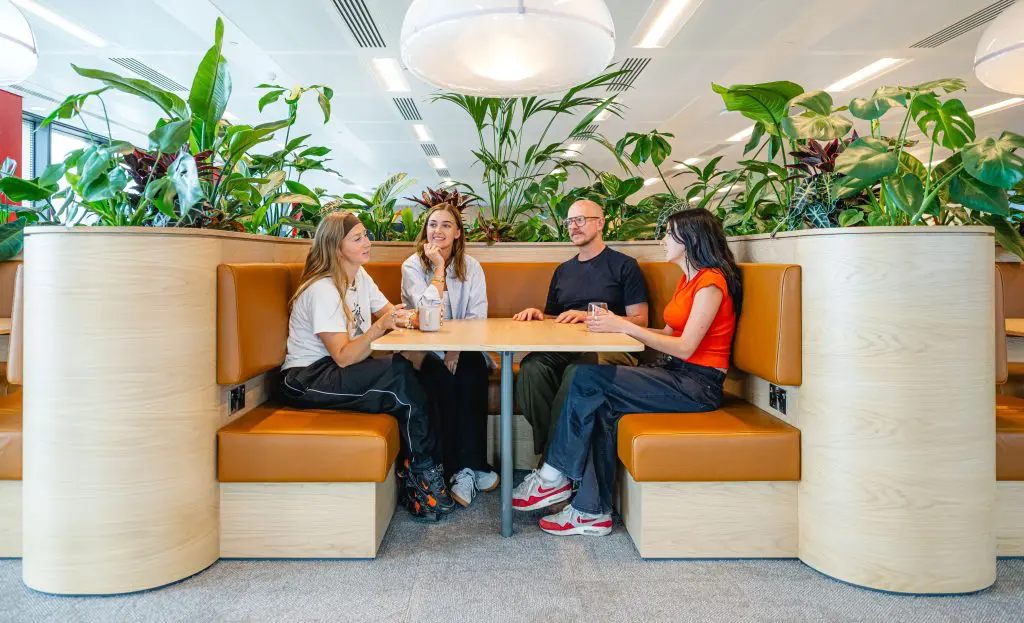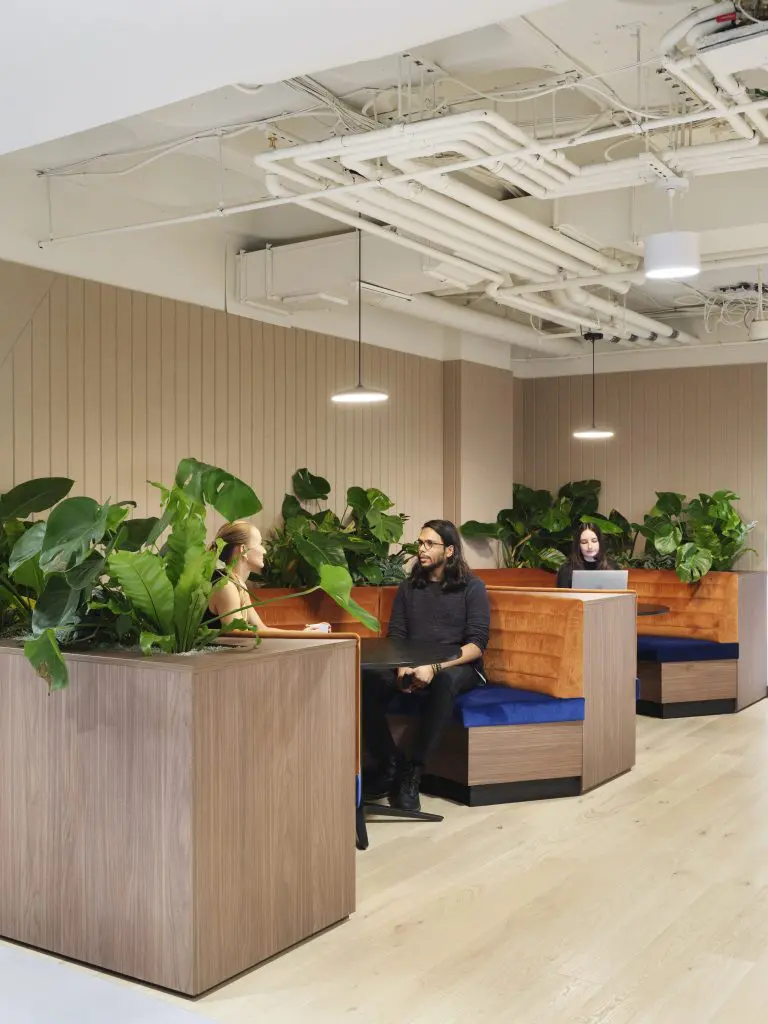The science of wellness in the workplace
Workplace wellbeing encompasses how employees feel at work and about work, with a focus on developing and displaying healthy behaviours.
More specifically, it can include some of the following elements:
- A positive working environment
- Job satisfaction and purposefulness
- Good leadership and management
- Pay and reward
- Personal development
- Physical and mental health

Impact of Stress, Poor Air Quality and Sterile Environments on Staff
Factors such as stress, poor air quality and sterile environments can all have a negative impact on workplace wellbeing. Poor workplace mental health has been estimated to cost UK businesses an incredible £45bn each year. Furthermore, Lumien data reveals how wellbeing impacts employees 27% of the time, and as a result, companies are losing 17% productivity.
Annually, this equates to £5,318.45 per employee, representing a significant organisational cost that could be mitigated through the implementation of wellbeing-focused initiatives.
Scientific Evidence Supporting Biophilia
Taking an evidence-based approach to workplace wellbeing allows employers to understand their employees wants and needs, along with areas of improvement.
According to the Mental Health Foundation, 45% of people reported that visiting green spaces helped them to cope. Likewise, Harvard research finds that spending 20 to 30 minutes in an outdoor setting where people feel they are interacting with nature can lower stress hormone levels.

Cognitive and Productivity Benefits of Greenery in Offices
The concept of biophilia is supported by various studies and frameworks, including Kaplan’s Attention Restoration Theory which found that exposure to nature reduces mental fatigue, as well as helping improve focus and our ability to concentrate.
Likewise, Ulrech’s 1981 Stress Reduction Theory claims that natural environments promote recovery from stress, while urban environments tend to hinder it.

The Psychological Basis of Nature Engagement
According to the National Library of Medicine, individuals have less mental distress, less anxiety and depression, greater wellbeing and healthier cortisol profiles when living in areas with more greenspace.
This is reinforced by NHS research, which found that people who spend at least two hours a week in nature experience better health and higher psychological wellbeing than those who do not visit nature at all during an average week.

Sensory Benefits of Plant Interaction
Sensory planting encourages an increasingly engaging and meaningful experience with plants, stimulating senses, including smell, sound, touch and sight.
According to the RHS, selecting plants that are particularly good for your senses can improve mood and general wellbeing.
Examples of plants with sensory benefits include:
· Fragrant flowers, such as lavender, jasmine and rose
· Herbs, including mint, basil and rosemary
· Plants with a particularly textural appearance include lamb’s ear, ferns and ornamental grasses.
· Vibrantly coloured plants that satisfy the visual sense
· Edible plants such as strawberry plants

Read More
Discover ways to enhance your office environment with our expert insights on biophilic design, wellbeing, sustainability and the world of plants.






